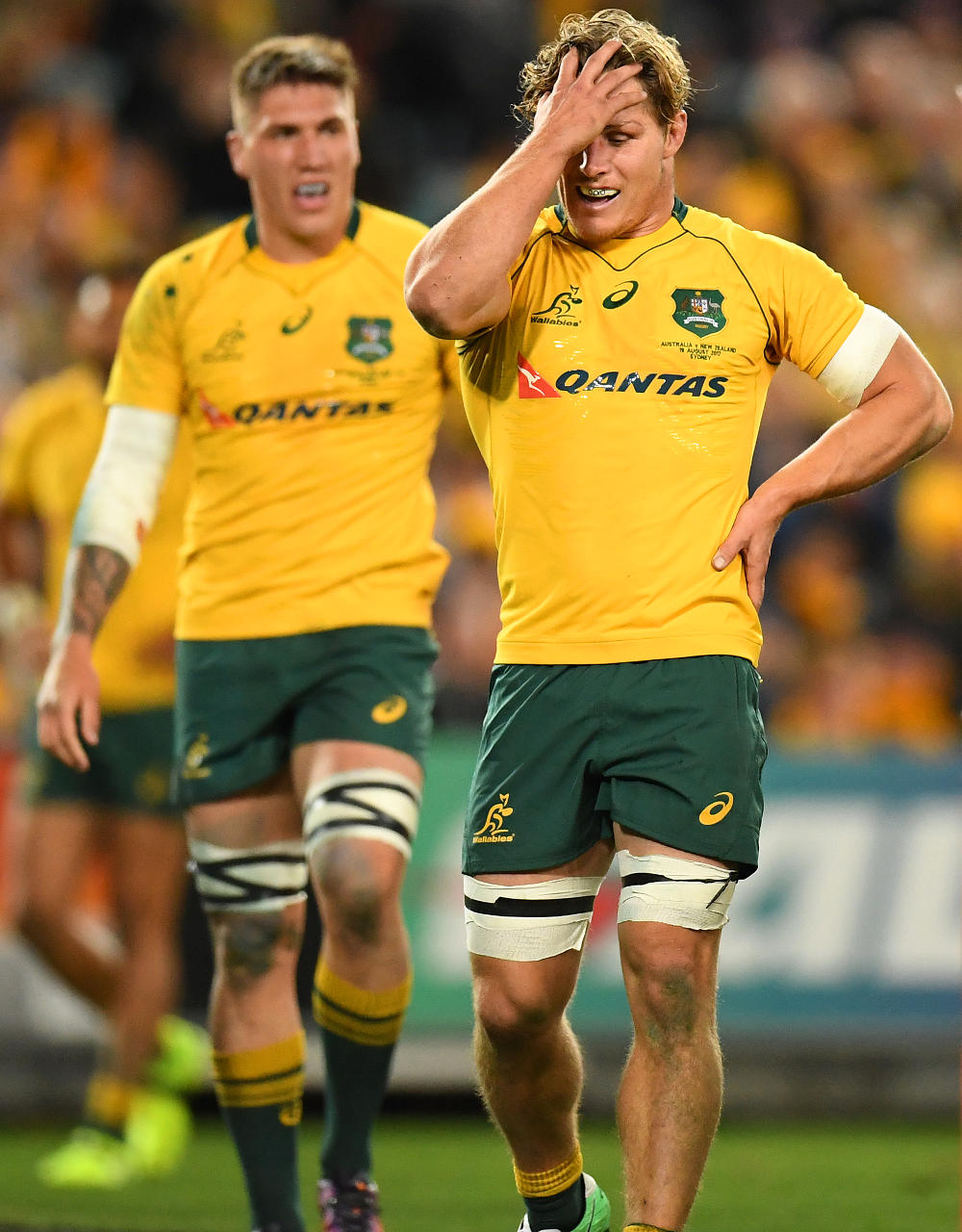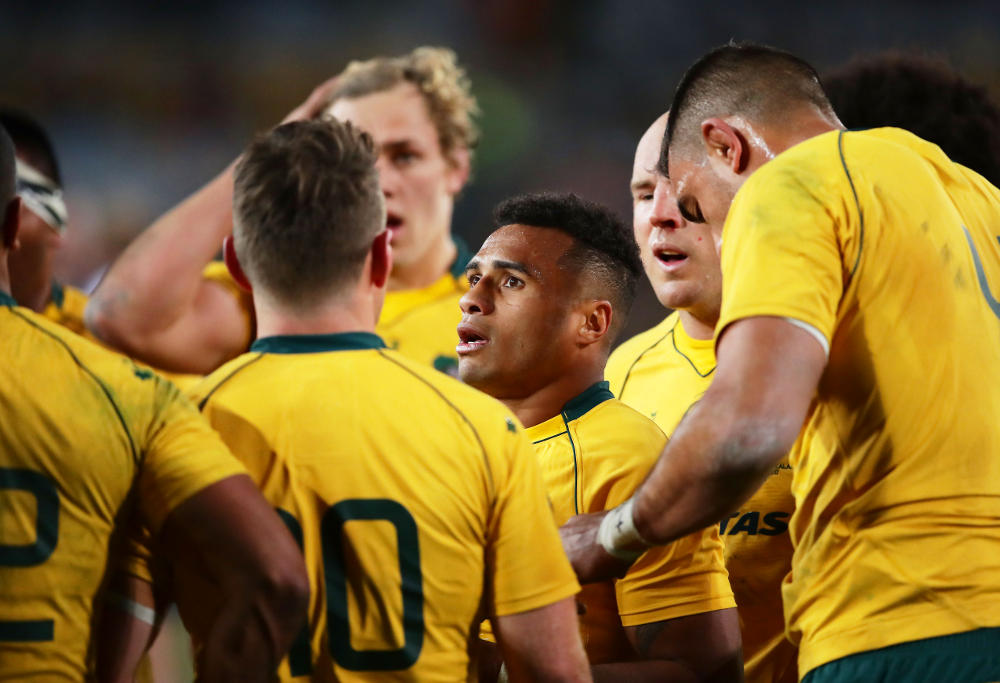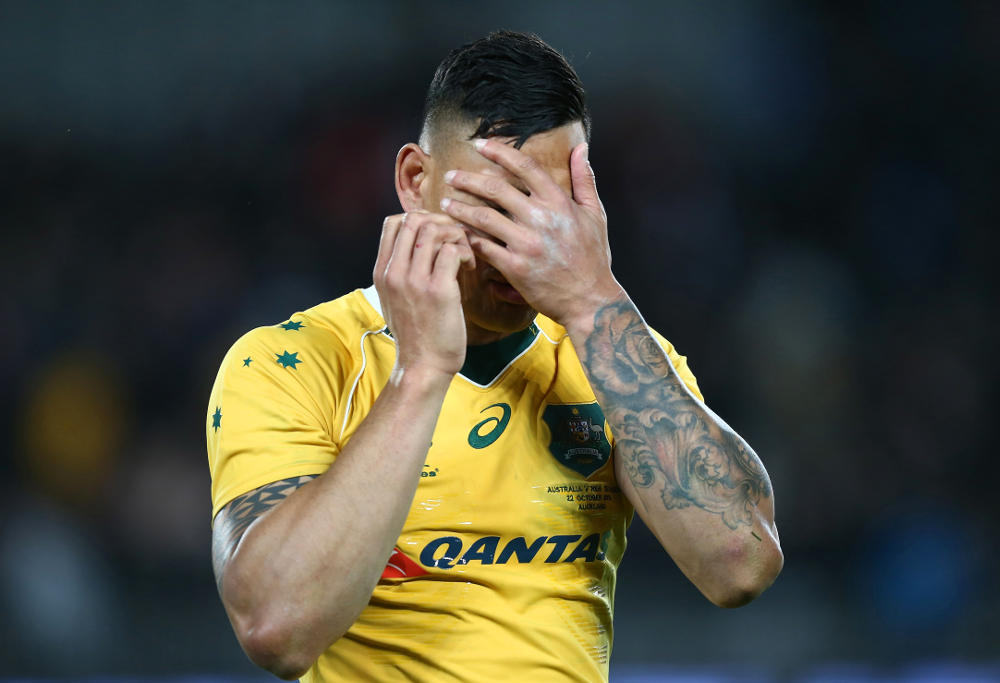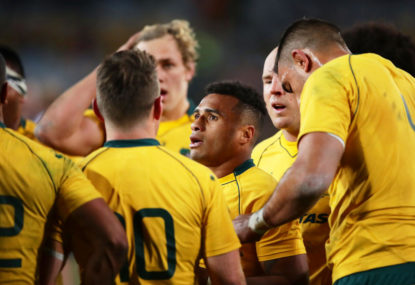By the time Ryan Crotty crossed for the All Blacks right on the stroke of halftime to bring the score to an astonishing, point-a-minute 40-6, fans across Australia were already in meltdown.
The rage continued over the weekend, a common theme being that the Wallabies ‘lacked heart’.
At the after-match press conference, coach Michael Cheika was quick to reject this – rightly pointing out that a side without heart would not have found the resolve (and skill) to score the final four tries of the match, in doing so taking plenty of the gloss off what, up until then, had been a superb All Blacks performance.
In truth, it was three tries, but more on that later.
Not prepared to accept any positives, angry fans thus rejected the last 30 minutes of the Test as New Zealand clocking off, not caring anymore because the game was already won.
It was Steve Hansen’s turn to dispel this myth. “The first 50 minutes was probably as good a rugby as you’ll see. The last 30 some of the ugliest,” he said.
While acknowledging that his side “got a bit seduced by the scoreboard”, Hansen insisted that the attitude of the players never softened and that the change in outcome was more to do with a swing in momentum and improved defensive pressure from the Wallabies forcing handling errors.
Hansen was accurately reflecting every coaches’ dream scenario; “we thrashed them in the first half when the game needed to be won, but we’ve still got plenty to work on this week.”
In truth, the Wallabies played well with the ball throughout the match, starting from the kick-off, where sustained attack for nearly three unbroken minutes delivered the first points of the match to Bernard Foley. Certainly, there were mishaps along the way, but in any game where the ball is being moved with such speed and intent, there were inevitably going to be spillages, on both sides.
Inevitably, these errors favoured the All Blacks, none more so that Michael Hooper, early in the second half, bobbling a catch straight into Beauden Barrett, who in turn gave Damian McKenzie an easy run in for the All Blacks’ eighth try.

(AAP Image/Dean Lewins)
The Wallabies persevered, however. Nick Phipps provided energy at halfback, Tevita Kuridrani was direct, and Kurtley Beale and Israel Folau achieved good reward for their efforts in the final quarter.
Unfortunately, rugby is equal parts attack and defence, and predicted fears that changes to the Wallabies line-up and lack of match practice would impinge on their ability to lock in a defensive system robust enough to withstand the All Blacks proved prescient.
To illustrate, defence coach Nathan Grey was spotted on the field, in the guise of water-boy, frantically barking orders and pointing fingers at Wallabies players. Setting aside the merits or otherwise of Grey’s defensive blueprint, the notion that this type of behaviour is helpful – in the midst of a high-paced Test match where players are sucking for air, and 15 rampant Damien McKenzie lookalikes are running at them from every phase – is deeply flawed.
Angry fans went straight to the stats sheet to identify 48 missed tackles by the Wallabies which, like statistics often do, missed the context of the match. A by-product of the strong winds that buffeted Sydney for two days was that conditions were bone-dry, suiting the ambition of both sides to move the ball at speed. A high missed tackle count – for both sides – was always on the cards.
Acknowledging that last year I, and others, were critical of Cheika lacking a consistent, discernible game plan, it is also a criticism that his adherence to an all-out attacking strategy in this match lacked balance.
Note that the Lions drew their series against New Zealand because they were equally competent in attack and defence, in the forwards and the backs, had a particular strength in kicking, were mentally strong, and thus were able to compete both on their own terms and however New Zealand chose to play the game.
Therein lies the root of Cheika’s problem. His best game – fast-paced wide-ranging attack such as seen in periods against England last year – is also the All Blacks’ best game. Only they do it better.
Unlike Warren Gatland, Cheika cannot easily employ a different strategy, partly because he now staunchly believes that this way is the right way to play, and partly because his playing list does not afford him the opportunity to kick more strategically, or engage more up front.

(Photo by Matt King/Getty Images)
The quid-pro-quo of putting all one’s eggs in the attacking basket is that players inevitably fatigue, or find themselves out of position when a turnover occurs, from where a side as good as this All Blacks side is can quickly put them to the sword.
Cheika alluded to this post-match, noting that his defenders found themselves faced with waves of attackers, with threats to their left and right and, rather than lacking in attitude, allowed a little bit of doubt to creep in.
With Barrett selectively able to dish off midfield pop passes or sweep the ball sharply to the flanks, defenders were hesitating and second-guessing; in effect, they provided the attack with extra space and sealed their own fate.
Nowhere was this better illustrated than with Reiko Ioane’s first try, where he and Barrett were able to conjure space on the left where none seemingly existed.
These are small errors that unfortunately translate into major damage on the scoreboard. But lazy, simplistic criticism of the Wallabies does the All Blacks, and the modern game, a gross disservice.
If you eat truffles every day they will eventually taste just like vegemite. Rugby fans today are so spoiled they now don’t even blink at the outrageous skills on display, and the pace at which these skills are performed in this match from both sides.
They incorrectly assume that defending is simply a matter of occupying a bit of space and laying a tackle, just like they occasionally did for some nondescript third-grade team back in the day.
Margins for error are so narrow that on a night when the All Blacks click in attack, when the re-cycle to and from Aaron Smith is rapid and the passes stick, the Wallabies can easily be made to look foolish – just as the French were in their 2015 World Cup quarter-final.
Also instructive was Steve Hansen’s commentary post-match (when he wasn’t adroitly deflecting loaded questions on Jerome Kaino) about the excellent flanker Liam Squire. Hansen explained how Squire had been quietly developed within the All Blacks’ environment over the last 18 months to the point where he is now physically and mentally ready for Test rugby.

(AAP Image/Paul Miller)
The contrast between Squire and Ned Hannigan is obvious. Hannigan appeals as a goer with the ability and inclination to make a good Test player at some future point, when experience and body development dictates.
That time is not now, yet the dire nature of Australia’s domestic situation – no high-level internal competition, failing Super Rugby franchises and flight of players with experience overseas – pushes Cheika to expose players like Hannigan and Curtis Rona to this level well before they are ready.
Before the match, as players straggled onto the field prior to beginning their warm-ups, it was fascinating to observe Wallabies skills coach Mick Byrne greet the All Blacks’ players individually, as if each was one of his long lost children. The affection and mutual respect was overt and genuine; star players clearly appreciative of the role Byrne has played in their own development and success, as Byrne is proud of their achievements.
Byrne is now firmly ensconsed in the Wallabies camp, but for now, the fruits of his labours are evident on the All Blacks side only. When the day comes that it is Australian players who are hugging Byrne like a lost father, fans will know that progress is finally being made.
In that vein, a high-performance review meeting held in Sydney on Thursday and Friday, at the initiative of founder of the new National Coaching Advisory Panel, Rod Kafer, which also involved the Super Rugby franchises, is also a step in the right direction.
The introduction of sharp, independent rugby brains like Byrne and Kafer is crucially important for the future of high-level rugby in Australia – even if it is insufficient for now to placate ‘the mob’, who have the blood of anything associated with the ARU in their nostrils, and who won’t be satisfied with anything less than a wholesale cleanout of the ARU executive and board, coaching staff and half the Wallabies squad.
The problem with throwing all of the toys out of the cot is that all that is left is an empty cot. Who are the replacement administrators who can make silk purses out of the same set of sows ears faced by the current administration?
Who are the replacement coaches with sufficient experience and smarts to conjure a different result against the All Blacks, using the same players – many of who now have an ingrained inferiority complex against New Zealand sides.
Note the comment above – ‘half the Wallabies squad’. What angry fans fail to grasp is that they never agree on which half, and so in shouting the house down, they merely consign themselves to continual squabbling and a depressing and increasingly desperate spiral of blame-seeking – none of which is a constructive contributor to future success.
Also unsuccessful was TMO Rowan Kitt and referee Wayne Barnes’ efforts to convince fans that rugby’s video review system is working as it should be. That Israel Folau’s 68th-minute try could be awarded despite there being an obvious forward pass and a clear offside defied all logic and common-sense.

(AAP Image/ David Rowland)
This is uncomfortable territory for rugby. There is a growing sense that a vitally important match will come down to a last-minute TV review decision that will confuse and divide fans. Oh, hang on a minute…
The same officials followed up by ruling that Foley recovered enough to touch the ball down in-goal, simultaneously with Barrett, a 50/50 call, whichever way it was ruled. But considered together, there was a feeling that the Wallabies might have been better saving up their TMO luck for another, tighter occasion when it might be needed.
In Port Elizabeth, South Africa continued their 2017 resurgence with an impressive 37-15 victory over Argentina. Challenged by the Pumas, who closed to within eight points in the second half, the Springboks employed a stronger bench to close the match out impressively
One narrative is that all four sides come away from this opening weekend with a number of positives to draw on and that this year’s Rugby Championship has many intriguing twists and turns to come.
Another view is that Saturday’s first half accurately represents the true, irredeemable state of Australian rugby. Are Cheika and his Wallabies capable of proving this – admittedly popular – view to be just another myth?

































































































